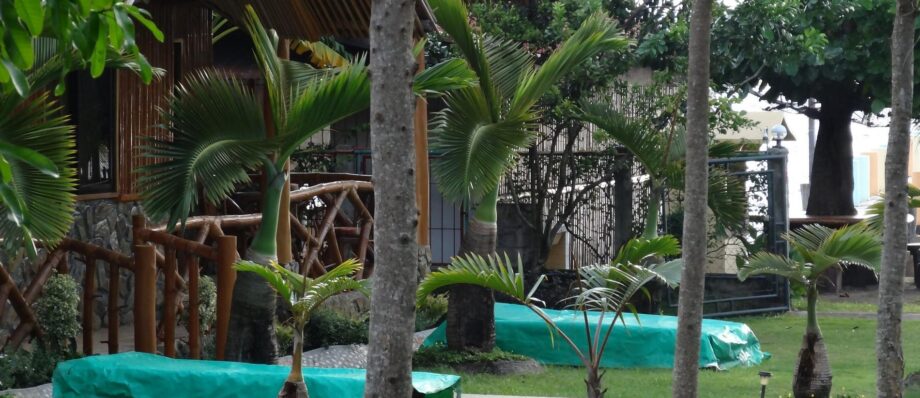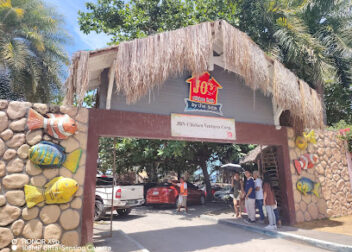Best Time to Dive in Negros Island
Are you dreaming of an underwater adventure in one of the Philippines’ most breathtaking diving spots? Negros Island, with its vibrant coral reefs and diverse marine life, is calling your name! Whether you’re a seasoned diver or just starting out, understanding the best time to explore these pristine waters can make all the difference in your experience. In this post, we’ll dive into the seasonal weather patterns, marine life activity, and visibility conditions that will help you plan your perfect dive. Let’s make sure you get the most out of your underwater explorations!
Understanding the Diving Seasons
When planning a diving trip to Negros Island, understanding the local seasons is crucial for making the most of your underwater adventures. Negros experiences two primary seasons: the dry season and the wet season. Each season brings its own unique conditions that can significantly affect your diving experience, from water temperature to sea conditions. Let’s dive deeper into what you can expect during these seasons and why they matter.
The Dry Season: December to May
Overview
The dry season in Negros Island typically spans from December to May, making it the most popular time for divers to explore the vibrant underwater world. During these months, you’ll find calm seas, minimal rainfall, and excellent visibility.
Conditions
- Water Temperature: The water temperature during the dry season usually ranges between 26°C to 30°C (79°F to 86°F). This comfortable warmth allows divers to enjoy extended dives without the need for heavy wetsuits. Many divers opt for a 3mm wetsuit or even a rash guard for protection against sun and minor scrapes.
- Rainfall: Rainfall is relatively rare during this season, with January and February being particularly dry. This means you’ll spend more time underwater and less time waiting for storms to pass.
- Sea Conditions: The seas are generally calm, making for excellent diving conditions. You can expect smooth entries and exits, which is particularly important for less experienced divers or those using larger gear.
Peak Diving Season
- Significance: The peak diving season usually falls between late March and early May. This is when conditions are at their very best. Visibility can reach up to 30 meters (about 100 feet), enabling divers to fully appreciate the vibrant coral reefs and diverse marine life.
- Best Dive Sites: During this time, sites like Apo Island and Dauin become prime locations for underwater photography, with an abundance of marine species like clownfish, sea turtles, and vibrant coral gardens.
The Wet Season: June to November
Overview
As the wet season rolls in from June to November, divers can still enjoy the underwater beauty of Negros, but conditions can vary more dramatically. This season is marked by increased rainfall and occasionally rough seas.
Conditions
- Water Temperature: The water temperature during the wet season remains quite warm, typically between 25°C to 29°C (77°F to 84°F). While you’ll still be comfortable, be prepared for slightly cooler temperatures during heavier rain.
- Rainfall: Rainfall is common during these months, especially from July to September. While it may rain on some days, you can often find sunny breaks perfect for diving.
- Sea Conditions: Sea conditions can be unpredictable during the wet season, with stronger currents and choppier waters. Some dive sites, especially those exposed to open water, may be less accessible. It’s advisable to consult with local dive shops for the most suitable sites during this time.
Diving Opportunities
- Less Crowded: One of the significant benefits of diving during the wet season is the reduced number of tourists. Dive sites are less crowded, allowing for a more intimate experience with marine life.
- Unique Sightings: The wet season can also offer unique underwater encounters, such as seasonal migrations of certain species. Keep an eye out for larger pelagic fish that may come closer to shore during this time.
Practical Tips for Divers
Gear Recommendations
Whether you’re diving during the dry or wet season, having the right gear is essential. Here are some recommended products:
- Wetsuits:
- Scubapro Everflex 3/2mm Fullsuit: Great for warm waters with flexible, comfortable material.
- Cressi Playa Shorty Wetsuit: Perfect for short dives during the dry season; easy to put on and take off.
- Dive Computers:
- Suunto Zoop Novo: User-friendly and ideal for both beginners and more experienced divers. It provides essential dive data in real-time.
- Garmin Descent Mk2i: A top-of-the-line dive computer with advanced features for serious divers looking to track their performance.
Local Dive Shops
Consider booking your dives with reputable local shops like:
- Atmosphere Resorts & Spa: Known for their excellent dive guides and top-notch equipment rentals.
- Liquid Dive Resort: Offers personalized dive packages and caters to all levels of divers.
Summary of Key Points
| Season | Water Temperature | Rainfall | Sea Conditions | Best for Diving |
|---|---|---|---|---|
| Dry Season | 26°C to 30°C | Minimal | Calm and clear | Peak season for visibility and marine life |
| Wet Season | 25°C to 29°C | Frequent showers | Unpredictable, choppy seas | Fewer crowds, unique seasonal sightings |
Understanding the seasons and their effects on diving conditions will help you plan a successful trip to Negros Island. Whether you choose the bustling dry season or the more tranquil wet season, you’re sure to experience the breathtaking underwater landscapes this island has to offer.
Marine Life Activity and Best Diving Months
When it comes to diving, timing is everything. The underwater world is a dynamic environment driven by the rhythms of marine life, with seasonal migrations, breeding periods, and visibility changing throughout the year. Understanding these patterns can help divers maximize their encounters with unique marine species and enjoy the most vibrant underwater experiences. Let’s dive into the best months for diving based on marine life activity!
January to March: Whale Shark Season
What to Expect
- Whale Sharks: These gentle giants often congregate in warm waters, making early in the year one of the best times to spot them.
- Turtle Nesting: In various regions, such as the Caribbean, sea turtles begin their nesting season around March, leading to sightings both underwater and on beaches.
Best Locations
- Utila, Honduras: Known for its whale shark sightings from February to April, Utila offers calm waters and fantastic visibility.
- Maldives: Expect to see whale sharks and manta rays from January through March, especially at sites like Hanifaru Bay.
Equipment Recommendations
- Aqualung Legend LX Regulator: Offers superb performance for deep-water dives.
- Mares Avanti Superchannel Fins: Great for maneuvering in currents, especially near whale sharks.
April to June: Coral Spawning and Manta Rays
What to Expect
- Coral Spawning: Typically occurring in April and May, this event attracts diverse marine life, including fish that come to feed on the nutrients released during spawning.
- Manta Ray Aggregation: Locations like the Maldives and the Socorro Islands become hotspots for manta ray activity.
Best Locations
- Great Barrier Reef, Australia: A treasure trove of biodiversity, divers can witness coral spawning and gather with manta rays during this period.
- Socorro Islands, Mexico: Known for large pelagic fish and stunning manta ray encounters, especially in May.
Equipment Recommendations
- SeaLife DC2000 Camera: Perfect for capturing the vibrant colors of coral and marine life during spawning.
- Scubapro Hydros Pro BCD: Offers comfort and versatility for long dive sessions.
July to September: Shark Season
What to Expect
- Shark Migration: As waters warm, species like hammerheads and tiger sharks become more prevalent.
- Turtle Hatching: Sea turtles hatch and make their way to the ocean, providing spectacular sights.
Best Locations
- Cocos Island, Costa Rica: Renowned for its hammerhead shark schools, especially in June and July.
- Galápagos Islands, Ecuador: Witness the migration of various shark species and the incredible marine biodiversity from July through September.
Equipment Recommendations
- Oceanic OCi Dive Computer: A reliable tool for tracking dive metrics while exploring shark-rich waters.
- TUSA X-Pert Zoom Fins: Designed for agility, making it easier to navigate through currents while observing sharks.
October to December: Unmatched Visibility and Fish Activity
What to Expect
- Increased Visibility: Cooler waters often lead to clearer visibility, enhancing the diving experience.
- Fish Spawning: Many species begin their spawning rituals, creating a feeding frenzy for divers to witness.
Best Locations
- Bonaire, Caribbean: Known for year-round great visibility, but it peaks in October and November, along with vibrant fish activity.
- Komodo National Park, Indonesia: Offers varied marine life and excellent visibility, especially in the dry months of October to December.
Equipment Recommendations
- Suunto D5 Dive Computer: Compact and stylish, it provides essential dive stats while maintaining a sleek design.
- O’Neill Psycho Tech Wetsuit: Great for thermal protection in cooler waters while keeping you mobile.
Summary of Key Months for Marine Life Activity
| Month | Marine Life Activity | Best Locations | Equipment Recommendations |
|---|---|---|---|
| January | Whale sharks, turtle nesting | Utila, Maldives | Aqualung Legend LX, Mares Avanti Superchannel |
| April | Coral spawning, manta rays | Great Barrier Reef, Socorro | SeaLife DC2000, Scubapro Hydros Pro |
| July | Shark migration, turtle hatching | Cocos Island, Galápagos | Oceanic OCi, TUSA X-Pert Zoom |
| October | Increased visibility, fish spawning | Bonaire, Komodo | Suunto D5, O’Neill Psycho Tech |
By understanding marine life activity and planning your dive trips accordingly, you can ensure unforgettable underwater experiences. Whether it’s swimming alongside majestic whale sharks or marveling at vibrant coral spawning, each season offers unique opportunities for divers eager to explore the ocean’s wonders.
Weather Conditions and Their Impact on Diving
Diving is an incredible way to explore the underwater world, but it’s essential to be aware of how weather conditions can significantly impact your experience. From typhoons to storms, understanding the effects of weather on diving is crucial for both safety and enjoyment.
Understanding Weather Impact on Diving
Typhoons and Storms
Typhoons and storms can create dangerous conditions for divers. High winds and rough seas can lead to strong currents and reduced visibility underwater. Here’s what you need to know:
- Currents: During storms, currents can become unpredictable and strong, increasing the risk of being swept away from your dive site.
- Visibility: Heavy rain and turbulent waters can drastically reduce visibility. Instead of enjoying vibrant coral reefs, you may find yourself in murky water.
- Safety: On the surface, boat travel becomes hazardous, and dive boats may be unable to reach dive sites.
Best Times to Avoid Diving
Certain times of the year are best avoided for diving due to weather concerns. Here’s a quick guide:
| Month | Region | Weather Concern |
|---|---|---|
| June | Caribbean | Hurricane Season Begins |
| September | Southeast Asia | Typhoon Peak |
| November | Central Pacific | Storm Season |
| February | Florida | Cold Fronts and High Winds |
Regional Considerations
Different regions have their own weather patterns that affect diving. Here’s a quick breakdown:
- Caribbean: Hurricane season runs from June to November. It’s wise to plan your trips outside of these months.
- Southeast Asia: Typhoon season peaks from August to October, making these months less ideal for diving.
- Pacific Islands: Storm season can occur from November to April, so check local advisories before diving during this period.
Checking Weather Forecasts and Local Advisories
Reliable Sources for Weather Information
To ensure a safe diving experience, it’s crucial to stay informed about weather conditions. Here are some reliable sources:
- Weather Apps: Download apps like Weather Underground or AccuWeather for localized forecasts and severe weather alerts.
- NOAA Marine Weather: The National Oceanic and Atmospheric Administration provides comprehensive marine forecasts that are particularly useful for divers.
- Local Dive Shops: Many dive shops have up-to-date information about local weather and sea conditions. Don’t hesitate to call them before heading out.
Monitoring Conditions
Before your dive, make it a habit to check:
- Wind Speeds: Ideally below 15 knots for safe diving conditions.
- Wave Heights: Avoid diving if wave heights exceed 2-3 feet, as this can indicate rough seas.
- Tides: Understanding tide schedules can also affect visibility and currents.
Equipment to Enhance Safety
Investing in the right gear can make a significant difference in your diving experience, especially during unpredictable weather conditions. Here are a few products to consider:
- Weatherproof Dive Gear: Look for brands like Aqua Lung or Scubapro that offer weather-resistant wetsuits designed for varying conditions.
- Dive Computers: Ensure your dive computer, such as the Suunto Zoop Novo, has features to monitor dive conditions and can alert you to any changes.
- Floatation Devices: Use a reliable buoyancy control device like the Cressi Start to help you manage your buoyancy even in choppy waters.
Essential Gear Checklist
Before heading out, make sure you have the following:
- Dive Computer
- Weatherproof Wetsuit
- Buoyancy Control Device
- Underwater Light for low visibility
- Surface Marker Buoy (SMB) to signal your position
By staying informed about the weather and equipping yourself with the right gear, you can enhance your safety and make the most out of your diving adventures, regardless of the conditions.
Final Thoughts on Optimal Diving Seasons
In conclusion, planning your dive trip to Negros Island requires careful consideration of seasonal weather, marine life activity, and the unique highlights of various dive sites. The best months to dive are typically from November to May, when conditions are most favorable and marine life is at its peak. By taking these factors into account, you can ensure an unforgettable underwater adventure filled with vibrant coral reefs and diverse marine species. So, gear up and start planning your dive journey to Negros Island—you won’t want to miss the incredible experiences that await beneath the waves!



